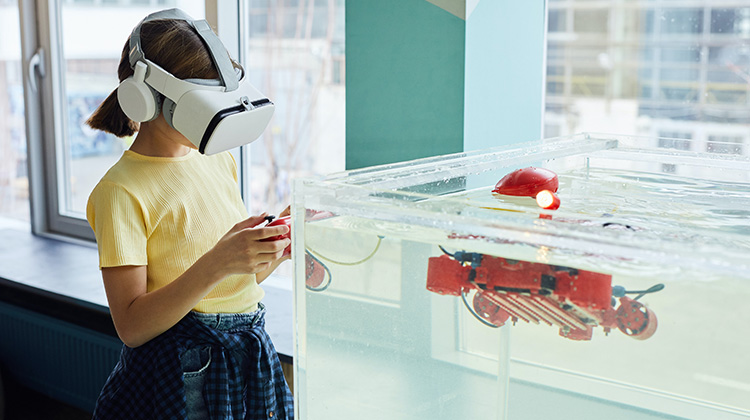Revolutionising Education Using the Metaverse

The term ‘Metaverse’ was recently unveiled to the world and it both equally excited and confused a lot of people. Whilst not everyone has grasped the concept completely, the metaverse as an enabled, somewhat connected, and immersive digital space is a goal the tech industry has been working towards for quite some time.
While several different metaverse environments are still under development, what we do know is that it has the potential to fundamentally change how we communicate, share, and interact not only with one another but also offer experiences we have only dreamed of prior. The technological and cultural shift it presents could be compared to the changes brought about by the introduction of the internet, albeit to a scale and way never seen before.
What is the metaverse anyway?
There are MANY different definitions of what the metaverse is, and what it may mean to one person/user can be completely different to its impact on another.
At its core however, the metaverse is a concept where people, spaces, assets, information, experiences, interaction, and collaboration take place in a virtual platform enabled by Web 3.0. It incorporates and builds upon existing technologies, such as virtual and augmented reality, artificial intelligence and hardware that previously would have been far out of reach, to allow users to be a part of and be immersed in the transformation of the internet as we know it, rather than just using it.
The impact on education
Like every other sector in the 21st century, education is now an industry that relies heavily on technology – this became apparent over the pandemic where programs such as Microsoft Teams were used to host virtual classes. The metaverse however, is set to take virtual classes to the next level by incorporating virtual reality (VR) and elements of artificial intelligence (AI) to enhance learning outcomes for students to support current curriculum aligned outcomes.
Imagine, that instead of logging into a MS Teams session or travelling to school, you were able to put on a Head Mounted Device (HMD) and be instantly transported to their virtual classroom, field trip, lecture theatre or sporting event. This virtual teleportation to another digital world would add a whole new dimension to the learning experience and take it well beyond just reading from a textbook and as a result start to change how we perceive the traditional ‘School’ and ‘Classroom’.
A great application of interactive learning has been our work with a school in Tasmania which will see students, learning about the marine ecosystem, virtually visit the Great Barrier Reef using VR. From their seats in the classroom, they will be transported to the crystal-clear waters of Northern Queensland and get a seemingly hands-on experience among the coral and crustaceans.
Just like the aviation industry which uses flight simulators for training, VR is a great tool that can create real world examples and immersive experiences that open new learning potentials for students that are safe and effective.
Another application of technologies optimised by the metaverse that is changing the traditional learning experiences is AI. By utilising its native AI functions, in the not-too-distant future, a student from Australia may no longer need to learn another language to connect with their peers in France to exchange notes. Real time translations will instead enable seamless communication and open a dialogue where students can share ideas and cultures in a more engaging and meaningful way.
Capitalising on the interactive element of the metaverse, barriers such as language, physical location, and culture will start to disappear! This would result in students gaining the ability to access more information than before whilst simultaneously promoting a holistic approach to learning.
Implementing the metaverse
While the metaverse provides limitless potential, we must also be cognisant of the risks which come with transitioning to a new platform. Even from a traditional sense there is always room for improvement in terms of ethical standards, so as we look to drive innovation and catapult learning outcomes with these types of technologies, we need to ensure that we look at everything from all angles as well as important elements such as inclusivity.
As we head into this transformation, there are a range of elements, variables, and perspectives that need to be considered, as well as be front and centre before any type of implementation or strategy is begun.
Presently, schools and other educational organisations have certain security measures in place. For instance, there are web filters in schools which only allow access to a selected list of whitelisted and approved sites to ensure the safety of students. So, a great deal of education and training would be needed for both students, parents, and educators to ensure the user’s safety before this technology is made widely available.
Meet you in the metaverse
With much still to be tested and trialled, what we can say for sure is that the educational landscape is changing – again. The next five years will see further significant advancements in accessibility and immersive learning that will see students, schools, and wider community benefit for the better.
But before this can happen these new technologies and ecosystems need to be understood and transformation needs to be embraced. It is the role of organisations like Lenovo to help pave the way and guide the education community towards their goal outcomes in a safe, compelling, and practical way.
Picture by Vanessa Loring